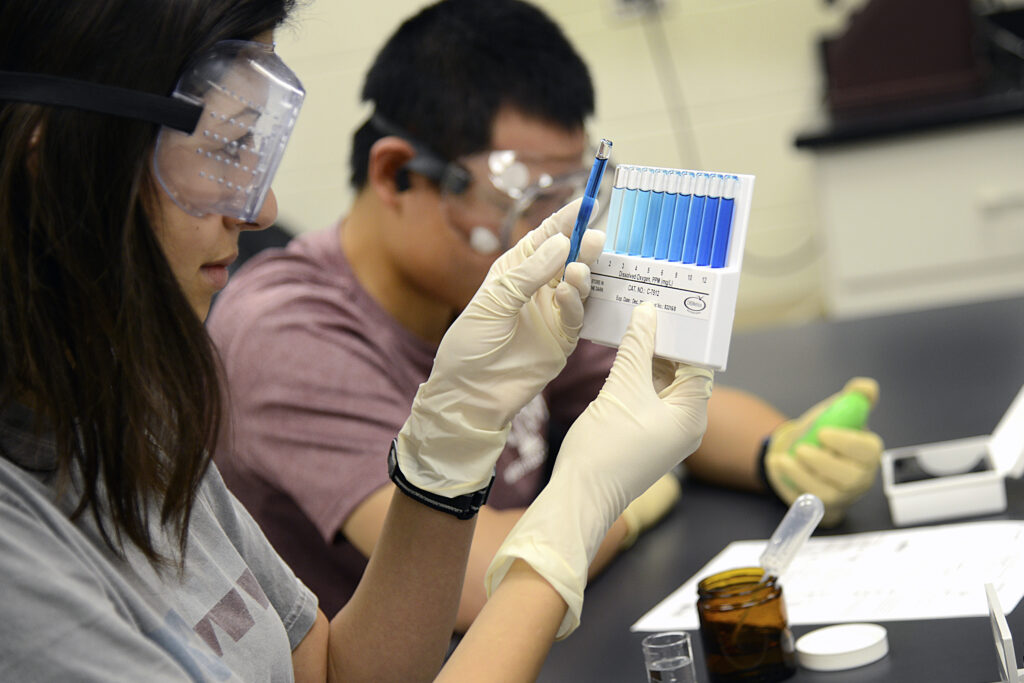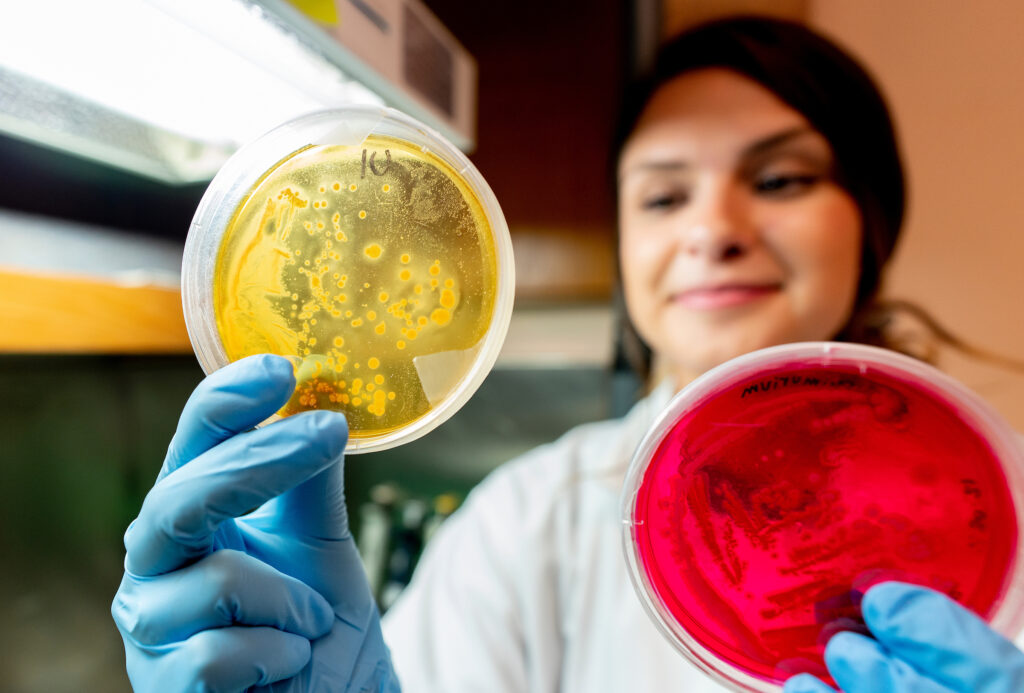
B.S. Bioenvironmental Sciences
Given the inherent interdisciplinary nature and strengths of the Department of Plant Pathology & Microbiology, this department houses the innovative and popular Bioenvironmental Sciences degree program. Students pursuing a science-intensive curriculum and careers in the sciences, environmental remediation, or science-based professional school programs are directed to our flagship Bioenvironmental Sciences (BESC) degree (with an undergraduate honors option). This degree also appeals to students who may be interested in a broad range of environmental and natural resource policy coursework.
Admissions
Applications for the B.S. in Bioenvironmental Science degree are processed through the main admissions portal at Texas A&M University. Choose your path below to learn more about the admissions process and requirements.
B.S. Bioenvironmental Sciences Program Details
Students in BESC have the unique opportunity to build their networking skills prior to graduation by participating in our student chapter of the National Association of Environmental Professionals. Each semester the club hosts several speakers from industry and governmental agencies involved in environmental management careers. For more information contact Sam Murdock, Dr. Won-Bo Shim or Dr. Brian Shaw.
- Degree: B.S. Bioenvironmental Sciences
- Credit Hours: 120 total credit hours
Undergraduate Honors Program

BESC offers an Undergraduate Honors Program. Students with at least a 3.5 cumulative GPR are eligible to enroll in Honors courses, which provide an enriched learning experience with faculty. This is the first Undergraduate Honors Program available within the College of Agriculture and Life Sciences.
Why major in Bioenvironmental Sciences?
Threats to the environment are real and gaining popularity in mainstream media with discussions like global warming. However environmental hazards take many forms, from microbial threats and toxic waste to the impact of man’s activities on a fragile ecosystem.
The solutions require innovative perspectives and technologically intensive approaches. That’s why we have developed the Bioenvironmental Sciences degree for those who are passionate about change.
The Texas A&M Advantage
- Enjoy the flexibility to design your personalized course plan with electives that appeal to your interests.
- You will have career advantages because this degree was created with consultation from industry leaders about trends in the career field.
- Gain a strong science background that will prepare you for graduate school or employment in environmental agencies, advocacy and education groups, and environmental/health & safety branches.
What Kind of Job Can I Get?
Students will be prepared for a number of environmental sciences career choices in such areas as research and development, environmental consulting, remediation of wastes, site assessment and environmental sampling, and environmental law.
What are the Best Choices for Electives?
Students are advised to choose an area of emphasis such as conservation/ecology, policy/ethics/regulations, the physical environment, engineering, plant studies, genetics/biotechnology and general environmental coursework.
Have Questions?
For degrees or admissions questions:
For general questions: